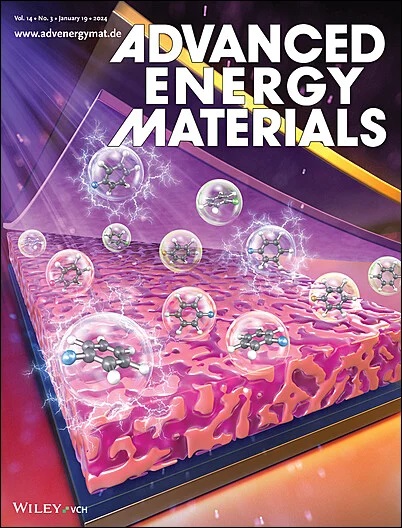Construction of KF-Rich Solid Electrolyte Interfaces Based on the Electrodeposition Behavior of FEC Additives for Protecting K-Metal Anodes
IF 24.4
1区 材料科学
Q1 CHEMISTRY, PHYSICAL
引用次数: 0
Abstract
Potassium metal (K) electrodes have attracted much attention as one of the most promising anode materials in potassium metal batteries. Nevertheless, dendrite growth and unstable solid electrolyte interface (SEI) have seriously hindered the practical application of potassium-metal anodes. Therefore, to address the aforementioned issue, a brand-new method is proposed: electrodeposition to construct a KF-rich artificial SEI layer, which can improve the stability and cycle time of the K metal anode. The homogeneous KF-rich SEI layer is formed via an in situ reaction between fresh K metal and the electrolyte additive fluoroethylene carbonate (FEC) during electrodeposition. This exerts tremendous effects on protecting the electrode and inhibiting the growth of dendrites. With the uniform and robust SEI layer, the potassium-metal symmetric battery has been stably cycled for more than 1400 h in a conventional carbonate electrolyte (0.8 m KPF6-based electrolyte (EC:DEC = 1:1, v/v)). In addition, K||Prussian blue (PPB) batteries with this conventional carbonate electrolyte can be operated for more than 200 cycles with an average Coulombic efficiency of 99.4%. This study sheds light on the construction mechanism of the KF-rich artificial SEI layer on K-metal anodes.

基于FEC保护k金属阳极的电沉积行为构建富kf固体电解质界面
金属钾电极作为金属钾电池中最有前途的负极材料之一,受到了广泛的关注。然而,枝晶生长和固体电解质界面(SEI)不稳定严重阻碍了钾金属阳极的实际应用。因此,为了解决上述问题,提出了一种全新的方法:电沉积构建富kf的人工SEI层,可以提高K金属阳极的稳定性和循环时间。在电沉积过程中,新鲜K金属与电解质添加剂氟乙烯碳酸酯(FEC)在原位反应形成了均匀的富kf SEI层。这对保护电极和抑制树突生长有很大的作用。利用均匀且坚固的SEI层,钾金属对称电池在传统碳酸盐电解质(0.8 m kpf6基电解质(EC:DEC = 1:1, v/v))中稳定循环超过1400 h。此外,使用这种传统碳酸盐电解质的K||普鲁士蓝(PPB)电池可以运行200多次循环,平均库仑效率为99.4%。本研究揭示了富kf人工SEI层在k金属阳极上的构建机理。
本文章由计算机程序翻译,如有差异,请以英文原文为准。
求助全文
约1分钟内获得全文
求助全文
来源期刊

Advanced Energy Materials
CHEMISTRY, PHYSICAL-ENERGY & FUELS
CiteScore
41.90
自引率
4.00%
发文量
889
审稿时长
1.4 months
期刊介绍:
Established in 2011, Advanced Energy Materials is an international, interdisciplinary, English-language journal that focuses on materials used in energy harvesting, conversion, and storage. It is regarded as a top-quality journal alongside Advanced Materials, Advanced Functional Materials, and Small.
With a 2022 Impact Factor of 27.8, Advanced Energy Materials is considered a prime source for the best energy-related research. The journal covers a wide range of topics in energy-related research, including organic and inorganic photovoltaics, batteries and supercapacitors, fuel cells, hydrogen generation and storage, thermoelectrics, water splitting and photocatalysis, solar fuels and thermosolar power, magnetocalorics, and piezoelectronics.
The readership of Advanced Energy Materials includes materials scientists, chemists, physicists, and engineers in both academia and industry. The journal is indexed in various databases and collections, such as Advanced Technologies & Aerospace Database, FIZ Karlsruhe, INSPEC (IET), Science Citation Index Expanded, Technology Collection, and Web of Science, among others.
 求助内容:
求助内容: 应助结果提醒方式:
应助结果提醒方式:


